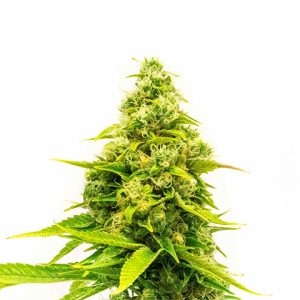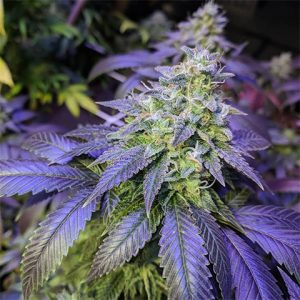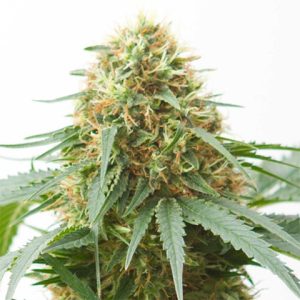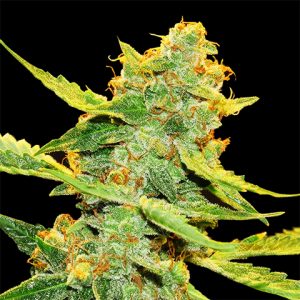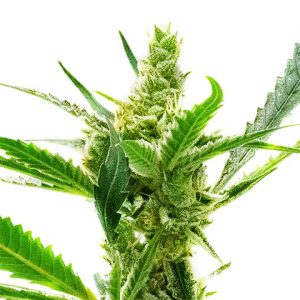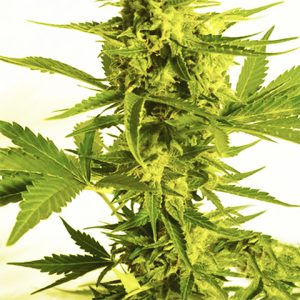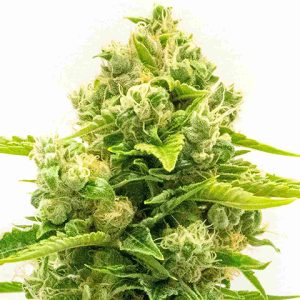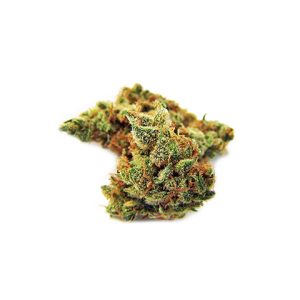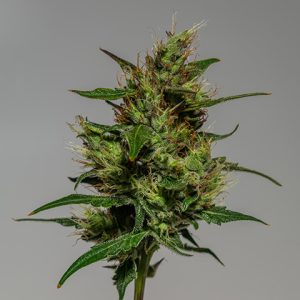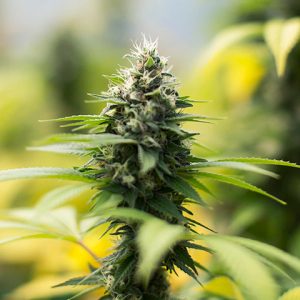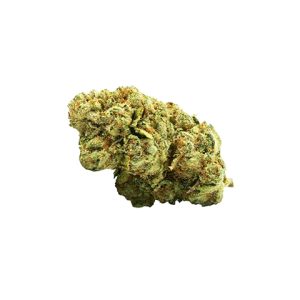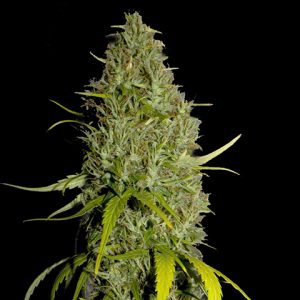Northern Strains: Cannabis with Northern Lineage
What Are Northern Seeds?
Northern seeds are a host of cannabis genetics bred from Northern Lights, its descendants and crosses, mixed with a host of other cannabis genetics. They are kept as a group in proximity to Northern Lights, which provides a euphoric and soporific mix of body and mind high. Prominent members of this family include the eponymous Northern Lights, its first generation crosses like Super Silver Haze, Hash Plant, Shiva Skunk, Crystal, Matanuska Tundra, Sour Diesel, Black Domina, and the legendary Jack Herer. We also carry a range of Northern cross strains in autoflowering varieties including Auto Northern Lights X Blueberry, Mazar, Cinderella 99, and Amnesia Haze. We also carry Northern Cream, Critical, Skunk, Big Bud, and Do Si Dos as photoperiod and sometimes regular unsexed seeds. We have fast flowering and high CBD varieties as well. The easiest way to find them all is to type Northern into our search bar above. What all these seeds have in common is a hardy plant that can get between three and six feet tall. Northern plants can produce between one hundred and five hundred and fifty grams of high-quality cannabis in as little as three months depending on the strain and your growing situation. These buds are typically quite dense and high in resin content, making them ideal for concentrate production. Buds generally hold between seventeen and twenty-three percent THC, with a relaxing and yet uplifting high that leaves users feeling like the sky is sparkling. Weed Seeds is excited to provide you with over a dozen different options when it comes to Northern family strains.
Where Do Northern Cannabis Seeds Come From?
The origins of Northern Lights are apocryphal, with at least three stories circulating. Apparently, NL started as a pure Afghani indica before being cut with Thai sativa sometime between the 1970’s and 1985. Some people believe that it was originally grown in Puget Sound, on one of the islands just outside of Seattle, by a man known only as “The Indian”. It’s possible that this person, Gujarati or Suquamish as he may have been, brought the genes from the plant up from California. There’s some evidence that the strain proliferated in the Pacific Northwest before being brought to Neville Schoenmakers and Sensi Seeds in Holland around 1985. Somewhere along the way these genes were cut with a little bit of Thai sativa to give the family its occasional intense berry flavor. It’s possible that Schoenmakers added in the Thai genetics in order to help to create seeds from a clones-only supply. Apparently Northern Lights One and Two are considered the fathers of the species. A mix of those genes and Hindu Kush still runs under the name Oasis. Regardless of which parts of this story are true and which parts are tall tales, it won the Cannabis Cup in 1989. There may be as many as eleven original plants that have created their own lines. Most of the more prestigious cultivars are descended from the plant called Northern Lights Five, though another line called Bella Ciao is also in many of the mixes. This illustrious line is all for sale here at Weed Seeds, with over five hundred strains to choose from!
Why Buy Northern Seeds?
Northern seeds are a wonderful choice for beginner or novice growers looking to cultivate something with a relatively high yield and fairly straight-forward care instructions. All members of this family are excellent at battling various kinds of chronic pain, insomnia, and depression, with different focuses depending on the exact strain. These plants are quite versatile, and many of the strains in this family can grow well both in and out of doors. Much of the Northern family is also available as autoflowering seeds. These tougher, faster flowering varieties don’t get as large as their photoperiod counterparts, but they don’t require the lighting switch necessary that causes other plants to start producing flowers. Kind Seed Co carries over five hundred different strains and styles of cannabis seeds to fit any kind of growing set up. We love to make sure that our customers have all the information they need to produce amazing crops the first time they grow. Simply browse our massive online catalog and read all about the strains you’re interested in. If you are having a hard time deciding between a few, our customer service phone number and email are there to help. We can help you make tough choices and walk you through ordering. It’s so easy to use our online ordering system though, it’s just clicking a few buttons, entering your payment information and waiting just five to fourteen days for your delivery. We take payments via Waave, a range of cryptocurrencies, credit cards , and even Zelle. When you buy from KSCO, you’re in good hands.
Seed Storage Of Northern Cannabis Seeds
While many seeds are happy to stay in the door of someone’s fridge for an extended period of time, weed seeds are slightly more fickle. They do like cool temperatures, but putting your seeds in the wrong part of your fridge can be dangerous. If you’re only going to be storing your seeds for a month or two, leaving them in the packages they were shipped to you in, placed in a dark cupboard or drawer, is probably alright. The exception is if you keep them somewhere where the temperature routinely gets very warm. If the drawer is above your stove or next to a heater, consider leaving them somewhere cooler. If you intend to store your seeds for longer, the ideal place to put them is in a dark and cool room where the relative humidity is between eight and ten percent and the temperature doesn’t get any higher than room temperature. It’s also important to keep seeds away from direct light, as it can drastically affect the temperature of the seeds, especially inside a little container where the air will heat up quite quickly. The last precaution to take is to not handle the seeds with your bare hands. Oils on human hands can degrade the seed casings, causing damage to the genetic material housed inside. Human hands also can hold all kinds of germs that are bad for your seeds. If you’re handling seeds, wear clean gloves or use tweezers that have been thoroughly washed before use. KSCO wants to help you grow the greatest crop of your life!
Germinating Northern Seeds
To germinate your Northern Lights family seeds, first soak them in a glass of water overnight. It’s wise not to let them sit in the glass for longer than twenty-four hours, as the seeds can drown! Especially if you see sprouts coming out, those seeds should be taken out of the water immediately. Next, drain most of the water and then pour the wet seeds onto a couple of paper towels on a clean plate. Make sure the paper towels are totally wet. Check to see if they leave puddles on the plate, as too much water is also not ideal in this situation. Drain any remaining water until the paper towels are at roughly the same moisture as a wet wipe, or just slightly wetter. Arrange the seeds on the paper towel so they have some space between them, and cover the arrangement with another similarly wetted paper towel. Cover the works with an upside-down plate of similar size as the first one. Check on your seeds every day, re-wetting the paper towel when needed. In one to three days your seeds should start to sprout, and they’ll be ready to transfer to a seedling setup in about a week. Leave your seedling in a small bit of soil or coco coir based growing medium, very loosely packed with plenty of room for root growth. Give them eighteen to twenty-four hours of direct light, with red and blue LEDs added for extra oomph. All our seeds come with insanely high germination rates and that’s the Weed Seeds difference!
Growing Northern Cannabis Plants
There are many varieties in this family, with a wide range of growing likes and dislikes. Some of them, like Northern Haze Five, can be grown up north as far as Canada in the summer. Northern Lights is a very common autoflowering cross that produces hardy ganja plants that can resist all kinds of molds and pests. Other plants, the original Northern Lights among them, prefer a dry and sunny Mediterranean climate where they can bush out and produce flowers in abundance. Many Northern family strains can be quite flexible, thriving both indoors and out. Their quick flowering times and relatively easy-care regimen make them a favorite of high level producers looking to rotate a crop through a warehouse in as little as three months. They do well with low stress training techniques and a little bit of extra nitrogen when they’re young. Northern plants are less susceptible to nitrogen burn than other cannabis plants, and they might like a little bit of extra sulfur with their calcium and magnesium early on in flowering. Keep your hydroponic growing solution with a pH hanging around 5.8. Plants grown in soil prefer it slightly more alkaline, with a pH between 6.2 and 6.7. These plants like ample full sunlight. A temperature hovering around seventy-five degrees Fahrenheit, with low relative humidity and no more than a ten-degree temperature dip at night, is highly recommended. Whether you’re populating an acreage, fitting out a basement, or growing a plant on your porch, WS makes it easy to grow celestial weed!
Growing Flowers From Northern Seeds Indoors
Northern family genes like a temperature of around seventy-five degrees Fahrenheit, with not very much variation throughout its life cycles. With Northern family strains you’ll likely want to get the humidity down to fifty-five percent pretty quickly when your plants start to vegetate. Leave the humidity there until it starts to flower, at which point it’s safe to slowly turn it down even lower while getting the temperature up just a few degrees higher. Most Northern plants do very well in a Sea of Green or a Screen of Green. These are two low stress training techniques that teach plants in a horizontal array to grow laterally. In a Sea of Green, a whole lot of tiny plants are taught to support one another before they are flipped to flowering very early on in their lives. This focuses their energy on growing large bud colas, and results in a quick crop of tall buds. In a Screen of Green, a mesh screen not unlike a fishing net is used to isolate buds so that they get the majority of the direct light, while the fan leaves and rest of the vegetation is kept low, causing it to grow laterally. While Northern plants can also do well with more high stress techniques like defoliating, topping, and FIMming, it’s suggested that these techniques are left to more experienced growers, and never used on autoflowering plants as it can seriously affect their growth. When you grow using our seeds, you already know you’re getting the highest quality genetics. All you have to do is put the work in.
Growing Cannabis Flower Outdoors From Northern Seed
Many Northern family strains can be quite hardy and do well outdoors, especially the much taller versions. However, some of the family, especially some of the photoperiod varieties, need a Mediterranean climate to really thrive. If you live in southern California, this means you can easily put some of these babies on your back deck and expect an abundant yield. Many autoflowering varieties of Northern family strains are quite resistant to pests, mold, and excess humidity. They’ll also be more robust when faced with things like a less than ideal season. Some strains in this family are quite comfortable growing all across North America in the summer, so shop around between our more than a dozen different kinds of Northern family seeds and find the one that’s right for you. Northern Haze Five, for example, is quite comfortable with northern summers. These plants like to be put outdoors in mid-April. They like full sun and dry weather, so it may be wise to keep your plants in a greenhouse at some latitudes. It’s hard for Northern plants to cope with extended heat above eighty-five degrees Fahrenheit unless there’s quite a strong breeze. They also don’t like temperature differences between night and day that go past ten degrees, so watch your plant carefully for signs of heat stress. While Northern plants are quite resistant to pests and mold depending on the strain, it’s still important to remain vigilant about them. Check them for signs of bugs and rot regularly. KSCO wants you to get the best crop every time, no matter where you grow!
Typical Aroma Of Northern Cannabis Buds
The original Northern Lights has a very piney smell, befitting of a strain that invokes the wonder of a dark arctic night. Some of the original strains can fill a whole room with their smell just by opening a bag. On the plant, many Northern Lights descendants are known for their fresh, astringent scents mixed with a dank earthiness. This is likely a mix of pinene and myrcene, both abundant in many of these strains. This smell can carry on to the grinder. Ground up buds can have a very stereotypical dank, skunky, marijuana smell, while others smell very distinctly of damp rich soil. Yet others are more in the spicy and woody zone, making buds smell more like black pepper and a fermented beverage. This is most common in strains with an abundance of caryophyllene in them, another common terpene in these buds. Different aromas will come out depending on the exact strain, with some coming out very fruity and fresh and other more woody and earthen. Strains like Northern Haze and Northern Big Bud are piney but tropical, like a coconut and mint beverage. There are strong herbal notes to some of them, giving off relaxing and restorative energy, like spruce tree and eucalyptus oil in a hot bathtub. Of course, the Northern family is quite vast, and their aromas may differ quite a bit depending on what their specific genes and phenotypes are, how they were treated while alive, and what the drying and curing process was like. Weed Seeds’ collection runs the gamut, and you can try them all!
Harvesting Time When Growing Northern Strains
The average flowering time of a Northern family strain is between seven and eleven weeks. For a super rapidly growing crop, check out our fast-flowering strain varieties. Northern Skunk will also only take between seven and eight weeks of flowering to reach harvestability. The original Northern Lights in autoflowering style, as well as the Northern Big Bud cross, take between nine and eleven weeks to flower. Northern Do Si Dos sits between these two, with a flowering time of eight to ten weeks. While flowering time numbers can be helpful indicators of how buds are produced, they’re not one hundred percent when it comes to predicting what exact date your plants will be ready to harvest. The most reliable way to tell if your buds are at their peak is to use a magnifying glass, like a jeweler's loupe, to check on the trichomes of the plant. They start off as clear, producing little bubbles of resin. When the contents of THCA, the acid that turns into THC when heated, is at its peak these little bubbles turn opaque white. If you let the plant sit longer, they become honey colored, signalling that CBN, or cannabinol, is more present than THC. If you’d like a harvest with less psychoactivity, that’s lower in THC and higher in mellowing powers, leave your harvesting until the gold appears. Otherwise, chop your plants when the trichomes are around eighty percent milky. Be sure to consult our information about trimming and drying buds before you start. Whatever your preference, KSCO gets you the crop of your dreams.
What Yield Can You Get From Northern Plants
The yield producing powers of Northern family plants vary depending on what specific strain is being grown. Our Northern Lights Photo Fem variety can grow four hundred and fifty to five hundred and fifty grams per square meter, or up to six hundred grams per plant outdoors. Northern Lights autoflowering variety, on the other hand, grows between one hundred and two hundred and fifty grams per meter squared indoors, or two hundred to three hundred grams per plant outdoors. Northern DoSiDos and Northern Haze both grow around a pound of buds per meter squared. Northern Big Bud Autoflower can get around the same per meter, or two hundred and eighty grams per plant. Northern Skunk can also grow around four hundred and fifty grams per square meter indoors, but can grow up to eight hundred and fifty grams per plant outdoors. Almost all growing inputs and attributes will affect your yield size, with nutrients and lighting being two of the biggest ones. While it can be tempting to assume that more always equals better, it’s actually a very fine balance between giving your plant enough of what it needs at the right time and overloading them. It’s usually recommended that Northern plants receive a boost of calcium, magnesium, sulfur, and phosphorus at the start of their flowering period to help them bulk up, but that’s just the beginning. Each individual strain will likely have tips about how to grow them best if you check out their strain profile pages on our website here. Weed Seeds really loves keeping you informed!
Are Northern Buds High in THC?
Due to the uptick in hybrids boasting as much as thirty percent THC, the Northern Family is now closer to having a moderate amount of THC, comparatively. Still no slouches, many of these strains have upwards of twenty percent THC and can still pack a punch. The original Northern Lights has an average of seventeen percent THC, while the autoflowering variety has nineteen percent. Northern Skunk has up to seventeen percent THC as well, while Northern DoSiDos and Northern Big Bud clock in somewhere from eighteen to twenty-two percent THC. Northern Haze goes one further, with eighteen to twenty-three percent THC. They’re frequently cited as the kind of chronic that you take just two hits of and be good. Many of these plants are also fabulous resin producers. Combined with their complicated and elaborate flavors, they’re a favorite of concentrate makers. High THC strains tend to be the high resin producing plants because THC is found primarily in the resin of cannabis plants, along with most of the terpenes produced by the plants. Resin is produced by unfertilized cannabis flowers in an effort to help passing pollen stick to the flowers better. This resin often attracts insects, which is why cannabis plants might have evolved to produce THC in the resin, to act as a kind of deterrent to herbivory. Scientists are still researching exactly how these magical plants came to do what they do so beautifully. Once we find out, KSCO will be sure to tell you. We pride ourselves on having the best and most thorough information about our products!
Typical Effects of Smoking Northern
A lot will change depending on the specific crosses you’re working with, but in general Northern strains are ones that are used at the end of the day to help people relax and soothe overworked muscles and minds. Some strains in this family can have mild psychedelic sensory effects, especially in the first half hour to an hour of their impact. Your senses are heightened, food might taste better, light sparkles off objects, and touch feels wonderful. The name Northern Lights comes partially from this effect. The other way it got its name is from its uplifting, anti-depression vibes. The mental health aspects of this strain’s uplifting yet relaxing high can’t be overstated. Used for everything from everyday stress to chronic depression, bipolar disorder, and PTSD, there’s almost no danger of paranoia with most Northern Lights crosses and descendants. These strains are also used regularly for lack of appetite, all kinds of chronic pain, menstrual cramps, muscle strains, migraines, arthritis, and trouble sleeping. The insomnia-fighting effects of many NL family strains aren’t the kind that lead to a heavy-headed feeling the next morning either. Users can typically wake up feeling refreshed after a good night’s sleep, ready to tackle the day. Many people with terminal illnesses or those battling cancer have also sworn their allegiance to the strains in this family for their painkilling and mood boosting abilities. The Northern family is truly potent medicine, and KSCO couldn't be happier to provide around a dozen different varieties of them all at your fingertips right here. Check them out today!
Typical Flavors of Northern Family Strains
Northern Lights is known for its mentholated flavor. But this family has a wide range of tastes due to just how many different crosses there are. The original Northern Lights strains have a kind of earthy candy flavor, like a pine and soil flavored cough drop. It’s sweet but not too sweet, almost like anise. Northern Lights autoflower takes that earthy, piney, flavor and adds a spicey, sweet bouquet, possibly thanks to the way ruderalis genes interact with its genes. Northern Big Bud Autoflower has an earthy, fruity, pineapple, spicey, sweet flavor as well, with the pineapple part really standing out on the dry toke and exhale. Norther DoSiDos is a pungent and sweet but spicy mix of mint and pine notes, with the dankness of its DoSiDos genes shining through. Northern Skunk has a sweet citrus vibe, with all the higher lemon notes balanced out by the deeper, more earthy and fermented skunk tastes that give that side of its family a name. Most of these strains start out earthy at first, with a spice or sweetness to its aftertaste that builds on whatever is in the dry toke. Northern family strains are high in myrcene above all else, which makes sense considering the profoundly dank and yet fruity nature of its flavors. The second most abundant terpenes are caryophyllene and alpha pinene, which explains many of the woody, spicy, and fresh higher notes of the flavors. To see all the different terpene and flavor variations, check out all our strain information for each Northern Strain we carry! With WS, you can explore them all.
Baking and Making Edibles With Northern Buds
We suggest making either a lemon-based confectionery, a pasta sauce, or a warm salad dressing with Northern family buds. In all these dishes, the variable herbal, woody, and sweet flavors of these strains would be inoffensive and maybe even complimentary when done right. If you’re working with something like Northern Skunk or Northern Big Bud, who both have very citrus and sweet flavors undercut by a dankness, lemon cupcakes might do the trick. The closer you get to the mother strain, Northern Lights, the more savory you’ll want to go as the citrus becomes more piney. It’s possible to infuse all kinds of fat with cannabis. The most important part is to decarboxylate your weed first, which is a fancy and more precise way of saying heating it up just a little to make the THCA in its buds turn to THC. Heating different parts of your cannabis harvest for different lengths of time at different temperatures will bring out different cannabinoids. To get more CBD for example, you can use almost the entire plant and heat it at around two hundred and forty-five degrees for an hour to ninety minutes. THC decarbs the most reliably at around two hundred and fifty-two degrees for twenty-seven minutes. After that, if you boil some water with butter for an hour, or heat it with some oil for the same amount of time, and let it cool in your fridge. Skim off the layer of fat, and you’ve got a nice smooth butter. Buying seeds from Weed Seeds, you have your pick of any flavor you’re looking for!
Is It Worth It To Make Northern Cannabis Oil?
Northern family strains make ideal candidates for turning into cannabis oil. Making edible Northern Lights oil by infusing your weed into coconut or olive oil is easy and can be very worth it. If you’re someone who doesn’t like smoking but likes to be stoned, edible oils are a delightful way to get precise doses without inhaling. They’re also easy alternatives to making baked edibles, as you can just add a few drops of oil to whatever food you’re making, and it becomes an edible. The recommended potency is to use around a gram of decarboxylated cannabis flower for every half cup of liquid oil, though that can be adjusted according to your own preferences. To make oil quickly, heat up your chosen oil and decarboxylated cannabis to between one hundred and twenty to one hundred and eighty degrees for half an hour to an hour depending on your temperature. The lower the temperature, the longer you’ll want to cook it. Use an electric thermometer to make sure your oil isn't going over its burning point. It can be kept in the fridge until you’re ready to use it. If, however, you’re hoping to make RSO, or Rick Simpson Oil, which is a kind of pot oil that can be both smoked and eaten, we believe it’s not worth it. Making RSO involves mixing your cannabis with solvents and then boiling them off. It’s incredibly dangerous to do at home and should be left to professionals. Whenever possible, KSCO loves helping new producers learn how to make their favorite products.
What To Expect When Smoking And Vaping Northern Concentrates
The high of Northern Lights can come on quite trippy at first, and this is doubly true when using concentrates. A mixture of euphoria and intense focus on the sensory input around you can take hold quickly, causing users to space out and maybe even lose a bit of time. From there the high is quite relaxing, with a powerful body stone. This is definitely the kind of concentrate that you want to sample just lightly at first before going full on, it’s a knockout. One of the nicest parts of vaporizing cannabis is using different temperatures to bring out different effects and flavors in the same bud. The most abundant terpene in most Northern strains is myrcene, which is implicated in its dank scent and sweet flavors. Myrcene is a potent anti-inflammatory that is also found in cloves and mangoes. The original Northern Lights has a terpene profile high in that terpene, with caryophyllene and linalool added. Caryophyllene and myrcene are two of the most common cannabis terpenes. Caryophyllene gives a spicy, wood flavor to smokes. It’s a powerful sedative and anti-inflammatory that’s also found in black pepper. Linalool smells a bit like lavender or chamomile flowers, and it’s a great nerve soother and anti-anxiety terpene that’s frequently added to cosmetic products to make them smell lightly floral or sweet. Another common terpene in Northern strains is alpha pinene, which smells like rosemary or fresh spruce needles and gives a somewhat clear-headed twinge to highs. With over a dozen Northern strains in our stock, Kind Seed Co is confident you’ll find one to suit your tastes.
Kind Seed Co Northern Suggestions
Do you love tall purple buds? Try some deep and dank Northern buds! The original family matriarch, with just a few changes, Northern Lights autoflower has deeply hued hybrid indica buds with nineteen percent THC. With a piney sweetness and a euphoric high, it’s good for battling depression and pain. It does best outdoors, where it can grow two to three hundred grams per plant in just nine to eleven flowering weeks. Northern Big Bud autoflower can produce a pound per square meter of large, resinous and fruity buds with between twenty and twenty two percent THC in just nine or ten weeks of flowering time. Its happy body high is helpful for ADHD and chemotherapy pain and nausea. Northern Do Si Dos produces euphoric, resinous, and minty weed that does wonders for depression and insomnia. It boasts between eighteen and twenty two percent THC in the five hundred and fifty grams it can produce per square meter in eight to ten weeks. Northern Skunk is an indica dominant hybrid with up to seventeen percent THC. It can produce around a pound per meter squared, or almost two pounds per plant outdoors! This is in just two months of flowering time. It’s good for anxiety, inflammation, stress, and muscle spasms. Northern Haze 5 strain is a hybrid indica with between eighteen and twenty-three percent THC. These plants do best outdoors, where they can get up to six feet tall and produce upwards of a pound per plant in just two and a half months of flowering. Search Northern at KSCO for more!
